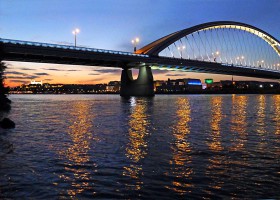SLOVAKIA Bratislava
The city is one of the smallest and youngest capitals of Europe. It is a small but charming city with a respectable inheritance of Baroque architecture, good museums and galleries, stunning monuments, splendid hotels, cosy restaurants, cosy cafes, an active cultural life, and youthful population. Bratislava was founded in the 13th century, on the site of a Celtic settlement built on the bank of the Danube. It became one of the most important cities in the Kingdom of Hungary and for 200 years it was the coronation place of its monarchs. In the 16th century, the Habsburgs took over the combined Bohemian and Hungarian states. Bratislava became the Hungarian capital (until the second half of the 18th century). In 1919, after WW I, Bratislava became part of the Czechoslovak Republic. When Germany invaded Czechoslovakia during WW II, a Slovak puppet state was declared. The Russians liberated the city in 1945. When the non-violent Velvet Revolution brought down the Communist government in 1989, four years later, Czechoslovakia ceased to exist and Bratislava became the capital of the sovereign Slovak Republic.
Most of Bratislava is on the north bank of the Danube. The SNP Bridge and an elevated roadway cut the Old Town in half. South banks of the river is the site of the model socialist suburb of Petržalka. The best views over the city can be seen from the Bratislava Castle, Slavin Hill with its memorial monument for the WW II Soviet liberation army soldiers, and Kamzík Peak with the Bratislava TV transmission tower and its rotating restaurant. The Old Town consists of the Castle, the St. Michael’s Gate, St. Martin’s Cathedral and Academia Istropolitana – the first university in the Hungarian monarchy founded by Matthias Corvinus, the Primate Palace, the Old Town Hall, the Slovak National Opera and Ballet.










